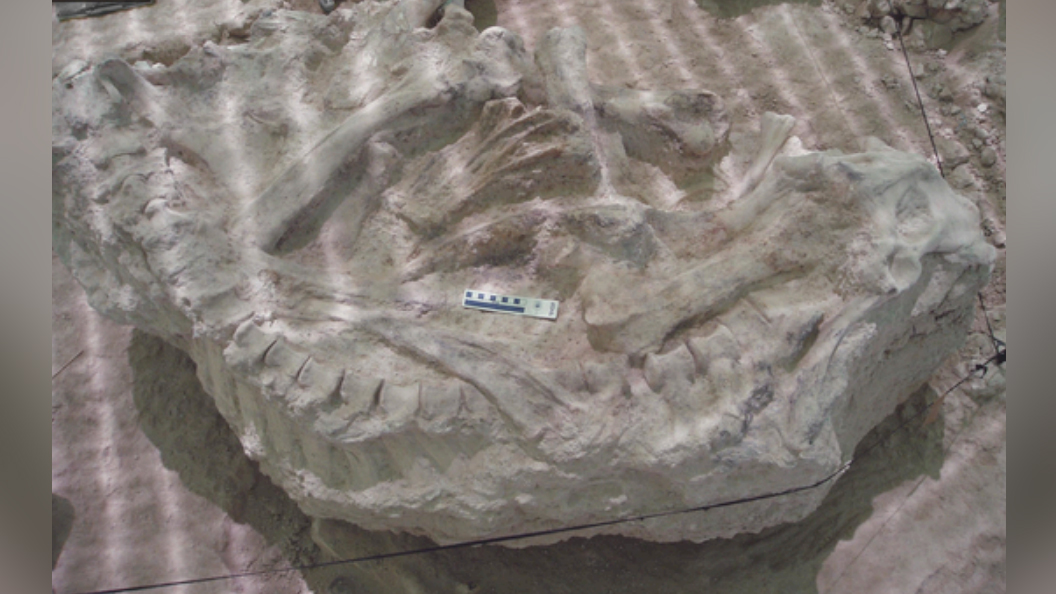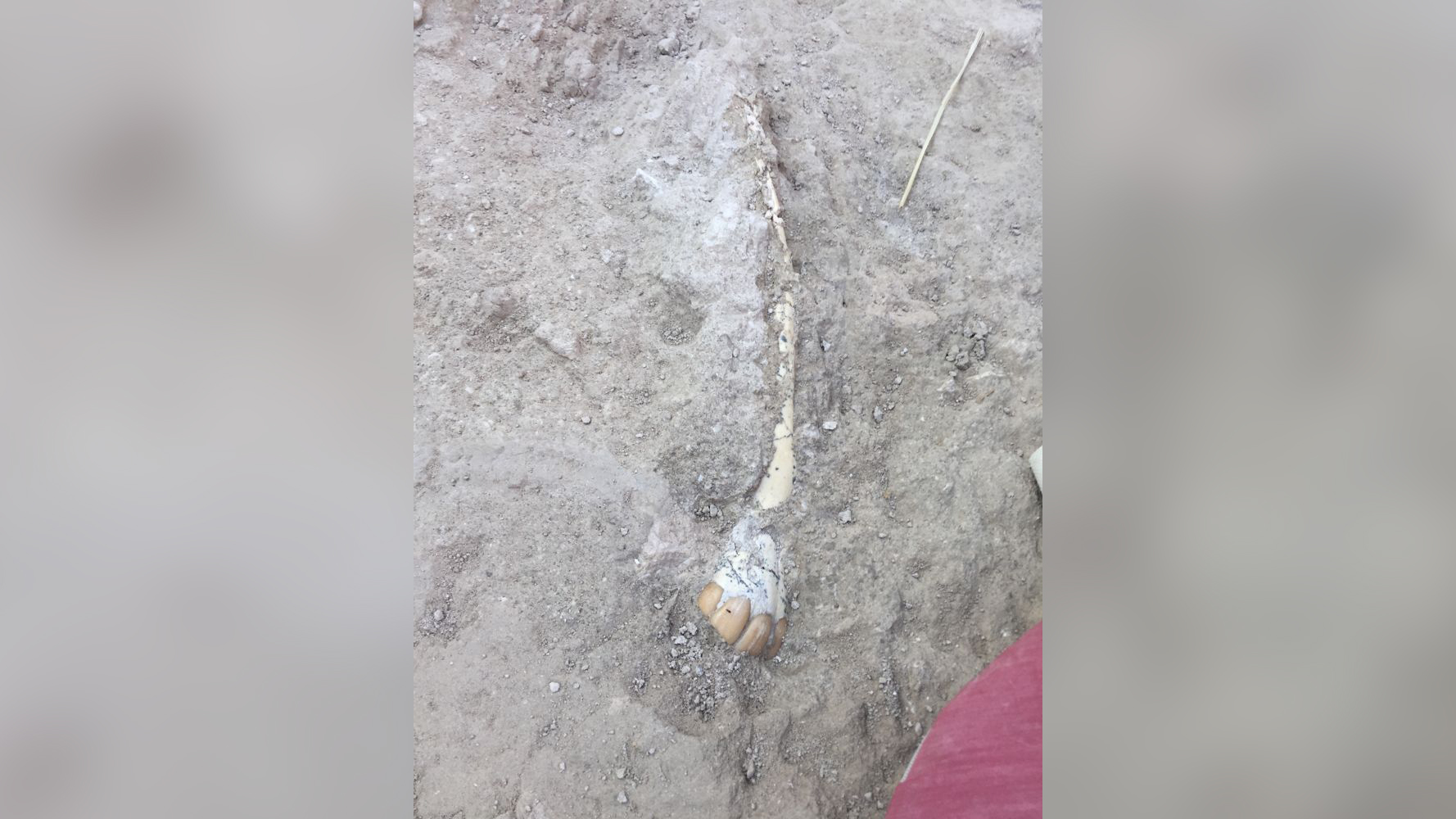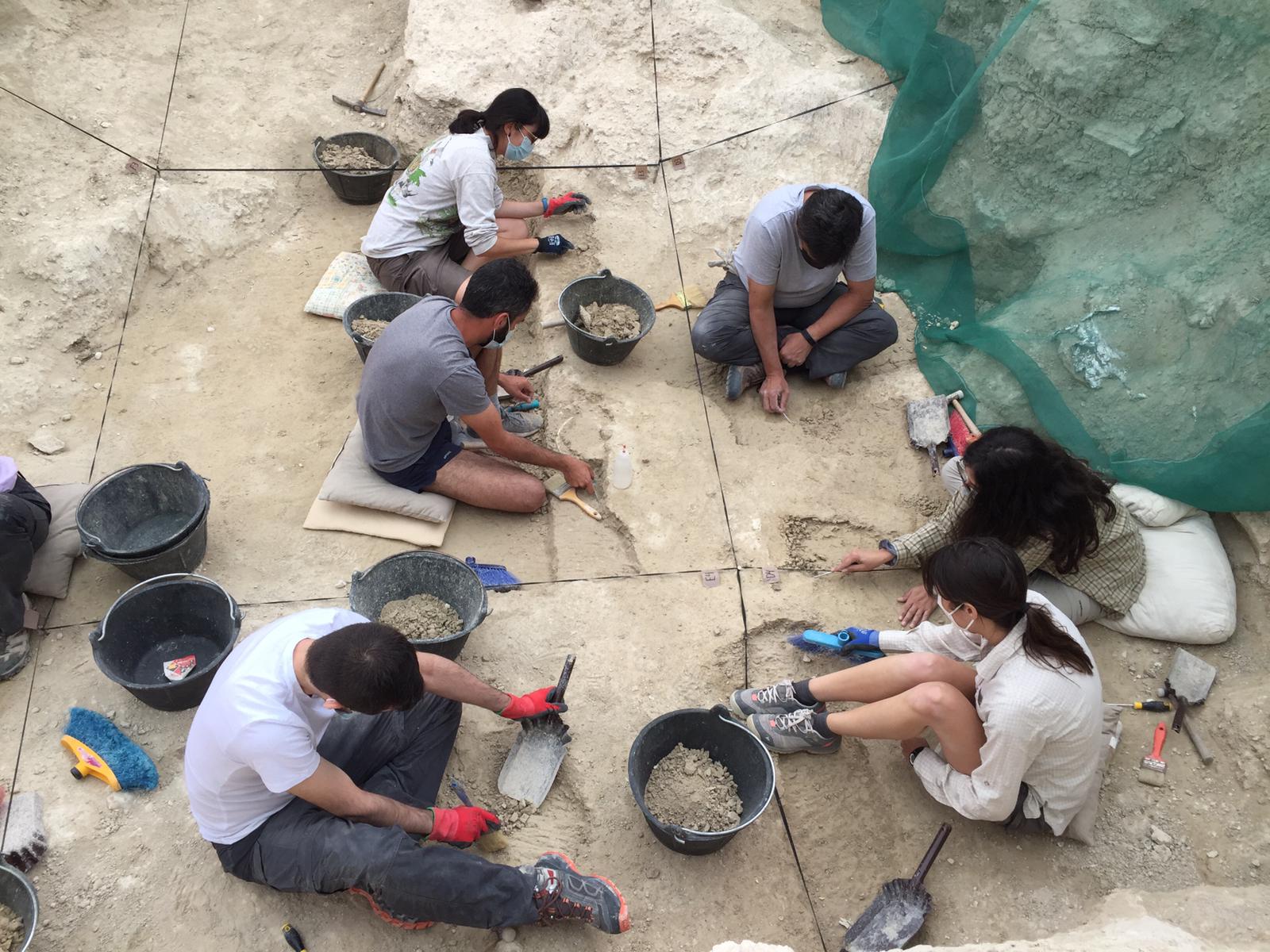Graveyard of rhinos, horses and giraffes found in ancient, dried-up watering hole
A fossil site in Spain stands witness to three periods of extreme drought.

Nine million years ago, a watering hole in what is now Spain became first a refuge, then a last resting place, for droves of desperate giraffes, rhinos, horses and sabertooth cats.
Dozens of animals died of starvation, dehydration and miring in the dwindling watering hole over three separate periods of drought in the late Miocene, according to new research published in the September issue of the journal Palaeogeography, Palaeoclimatology, Palaeoecology and available online July 15. The animals' remains were rapidly buried in sediment when the rains began again, leaving them mostly undisturbed by scavengers or weathering.
"Although they are over 9 million years old, they are exceptionally preserved," said study leader David Martín-Perea, a paleontologist at the National Natural Sciences Museum in Madrid. At the site, Martín-Perea and his colleagues discovered a variety of fragile remains from frogs, rodents and birds and even two fetal horses.
Related: 15 incredible places that are frozen in time



A Miocene gathering place
During the late Miocene, the region south of what is now Madrid was a mix of woodland and grassland, dotted with watering holes sunk into cavities in the underlying limestone and mudstone. In 2007, miners discovered a trove of bones in what turned out to be one of these ancient watering holes.
Since then, paleontologists have discovered thousands of bones buried across nine sites 19 miles (30 kilometers) outside of Madrid. The new research focused on one of those sites, Batallones-10. The site was a watering hole and hosts three distinct layers of fossilized bones. Nearly 9,000 fossils from dozens of species have been found. In the mix were the remains of 15 large mammals, such as extinct horses, mastodons, rhinoceroses, musk deer and cattle. Five of those large mammals were carnivorous: two species of sabertooth cats, a relative of hyenas, a mustelid (a relative of modern-day weasels, badgers and otters) and an ailurid (an extinct relative of modern-day red pandas).
The site also hosts a never-before-seen species, Decennatherium rex, an okapi-like giraffe.
Sign up for the Live Science daily newsletter now
Get the world’s most fascinating discoveries delivered straight to your inbox.

Drought and death
The presence of amphibians and tortoises at the site indicates that it was a wet oasis in the surrounding grassland. The bones showed few signs of predation, scavenging or trampling, suggesting they were buried quite quickly after the animals died.
Putting these clues together, along with the fact that the animals died in three discrete intervals, Martín-Perea and his colleagues concluded that the cause of death was drought. The site is a "textbook example" of a drought-caused assemblage of fossils, Martín-Perea told Live Science.
First, the site is in an area that would have experienced periods of seasonal dryness, based on analyses of animals' teeth that reveal details of what they were eating and drinking over time, the researchers reported. Second, lots of animals died in a short period of time near a water source, and the fossils indicate that lots of species that wouldn't normally be found together were gathering in one spot -- a sign that they were all looking for moisture. Other geological indicators, like mineral deposits characteristic of semi-arid environments, indicate that this was a drought-prone spot.
The animals also skewed young, which makes sense in the context of drought: Young animals have fewer reserves to draw on when times get tough, the researchers wrote, and they are the first to die in modern observations of drought.
Many of these young victims probably died not of dehydration, but starvation. As other sources of water dried up, more and more animals likely gathered at the Batallones oasis. Unwilling to travel far from this water source, they would have eaten down the vegetation nearby until there was little forage left. Some, weakened by hunger and thirst, would have ventured farther into the shrinking watering hole, only to get mired in the mud. Too exhausted to escape, they would have died in shallow water. These kinds of miring deaths are often seen at watering holes during modern-day droughts, the researchers wrote. These die-offs probably occurred over a period of weeks or several months, the researchers wrote.
As the rains returned, run-off from the surrounding land -- stripped of vegetation -- would have filled the bottom of the watering hole, burying the mired animals in a layer of sediment and protecting their remains. Bones from animals that died along the shores would have been washed down into the bottom of the watering hole, too. This rapid burial helped preserve extremely delicate fossils like the two fetal horses that died along with their mothers.
The next step, Martín-Perea said, is to dig deeper. Nearby, similar sites have deeper layers of fossils that are dominated by predators, and Ballatones-10 may still hold more sabertooth cats and other carnivores.
Originally published on Live Science.
Editor's note: This article was updated to indicate that the remains of giraffes, not hippos, were found at the site.

Stephanie Pappas is a contributing writer for Live Science, covering topics ranging from geoscience to archaeology to the human brain and behavior. She was previously a senior writer for Live Science but is now a freelancer based in Denver, Colorado, and regularly contributes to Scientific American and The Monitor, the monthly magazine of the American Psychological Association. Stephanie received a bachelor's degree in psychology from the University of South Carolina and a graduate certificate in science communication from the University of California, Santa Cruz.









